Blue Hesper palm
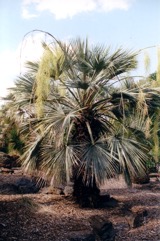
It will grow from subtropical to temperate climates. It needs well drained soil and full sunlight. It can tolerate some frost. In Mexico it grows in dry rocky soils. It is often on poor alkaline soils. In Mexico it grows from sea level to 1400 m altitude. In Brisbane Botanical Gardens. It suits hardiness zones 9-11.
Also known as:
Guadalupa, Mexican Blue palm, Palma azul
Synonyms
- Brahea armata var. microcarpa Becc.
- Brahea clara (L.H.Bailey) Espejo & Lopez-Ferrari
- Brahea roezlii Linden
- Erythea armata (S. Watson) Watson
- Erythea clara L.H.Bailey
- Erythea roezlii (Linden) L.H.Bailey
- Glaucotheca elegans (Franceschi ex Becc.) Johnston
Edible Portion
- Seeds, Nuts, Fruit, Leaf bases
Where does Blue Hesper palm grow?
Found in: Australia, Central America, Mexico, North America, Slovenia, United States
Notes: There are about 12-16 Brahea species. They all grow in Mexico.
Growing Blue Hesper palm
Cultivation: Plants are grown from seed. The seed germinate erratically in weeks or more than a year when the seed are older. Fresh seeds germinate easily. Seeds retain their ability to grow, for long periods of time. Seeds should be soaked well, before planting. Plants do not transplant easily.
Edible Uses: The fruit is eaten.
Production: It is slow growing when young.
Nutrition Info
per 100g edible portion| Edible Part | Energy (kcal) | Protein (g) | Iron (mg) | Vitamin A (ug) | Vitamin c (mg) | Zinc (mg) | % Water |
|---|---|---|---|---|---|---|---|
| - | - | - | - | - | - |
Blue Hesper palm Photos

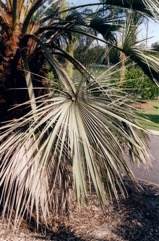
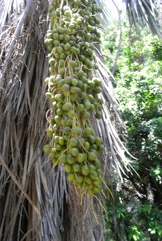
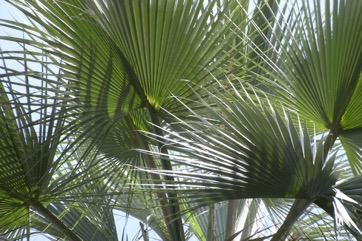
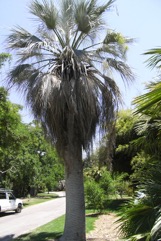
References
Balick, M.J. and Beck, H.T., (Ed.), 1990, Useful palms of the World. A Synoptic Bibliography. Colombia p 160
Beckstrom-Sternberg, Stephen M., and James A. Duke. "The Foodplant Database." http://probe.nalusda.gov:8300/cgi-bin/browse/foodplantdb.(ACEDB version 4.0 - data version July 1994) (As Glaucothea armata)
Blomberry, A. & Rodd, T., 1982, Palms. An informative practical guide. Angus & Robertson. p 64
Bodkin, F., 1991, Encyclopedia Botanica. Cornstalk publishing, p 167
Burkill, I.H., 1966, A Dictionary of the Economic Products of the Malay Peninsula. Ministry of Agriculture and Cooperatives, Kuala Lumpur, Malaysia. Vol 1 (A-H) p 960 (As Erythea armata)
Cundall, P., (ed.), 2004, Gardening Australia: flora: the gardener's bible. ABC Books. p 253
Etherington, K., & Imwold, D., (Eds), 2001, Botanica's Trees & Shrubs. The illustrated A-Z of over 8500 trees and shrubs. Random House, Australia. p 141
Facciola, S., 1998, Cornucopia 2: a Source Book of Edible Plants. Kampong Publications, p 28 (As Erythea armata)
Felger, R.S., Ancient Crops for the Twenty first century, in Rickie, G.A., (ed), 1979, New Agricultural Crops, AAAS Selected Symposium 38. Westview Press, Colarado. p 10
Gibbons, M., 1993, Palms. Compact study Guide and Identifier. Sandstone. p 23
Gibbons, M., 2003, A pocket guide to Palms. Chartwell Books. p 53
Henderson, A., Galeano, G and Bernal, R., 1995, Field Guide to the Palms of the Americas. Princeton. p 55
Jones, D.L., 1994, Palms throughout the World. Smithtonian Institution, Washington. p 146
Jones, D.L., 2000, Palms of Australia 3rd edition. Reed/New Holland. p 125
Kermath, B. M., et al, 2014, Food Plants in the Americas: A survey of the domesticated, cultivated and wild plants used for Human food in North, Central and South America and the Caribbean. On line draft. p 138
Llamas, K.A., 2003, Tropical Flowering Plants. Timber Press. p 95
Proc. Amer. Acad. Arts 11:146. 1876
Riffle, R.L. & Craft, P., 2003, An Encyclopedia of Cultivated Palms. Timber Press. p 277
Segura, S. et al, 2018, The edible fruit species in Mexico. Genet Resour Crop Evol (2018) 65:1767–1793
World Checklist of Useful Plant Species 2020. Royal Botanic Gardens, Kew
www.desert-tropicals.com